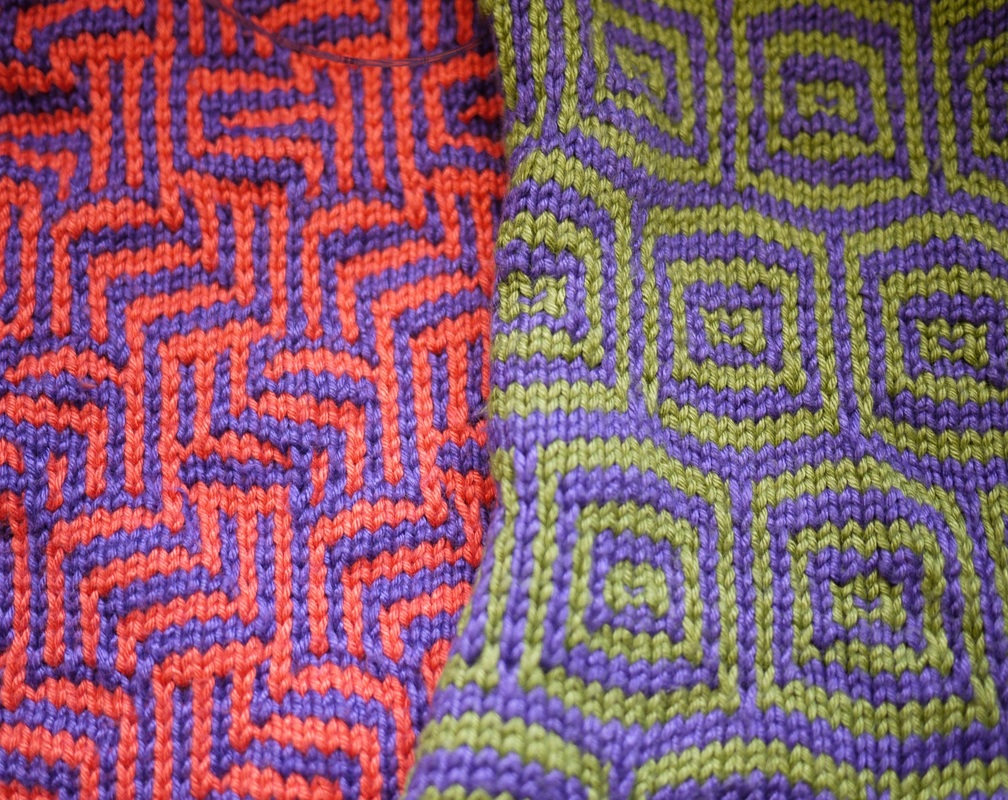
When Amy Singer wrote No Sheep For You (a wonderful reference and pattern book for people who want to knit with fibers other than wool), she included a section on bamboo fibers. She wrote that bamboo was “environmentally sustainable.” This was the prevailing opinion in 2007. Even today, if you search bamboo yarn, one of the first things you’ll see is the eco-friendly label. The “sustainable” label certainly fit given the information we had. Bamboo grows quickly with little need for fertilizers so there is less deforestation and chemical intervention needed. Bamboo can be used for many purposes from paper to furniture to flooring to yarn so there is less waste, and bamboo is biodegradable. These are all great properties, but in the process of making bamboo, many producers use toxic chemicals to process the fibers. It turns out, that unless you are working with bamboo that is organically certified, bamboo is far from eco-friendly.
To make bamboo fibers, the bamboo undergoes a process that uses carbon disulfide and sodium hydroxide. (I'm no chemist so I had to look these up.) Carbon disulfide, which is used to break down bamboo and many forms of viscose and rayon, has been linked to nerve damage and Parkinsonism. Sodium hydroxide is the chemical name for lye. Lye can cause burns and is classified as a hazardous, corrosive material. And, just for fun, Wikipedia defines corrosive material as: a liquid or solid that causes full thickness destruction of human skin at the site of contact within a specified period of time. Gross, right?
So, what to do? I really enjoy knitting with bamboo yarn and bamboo yarn blends. I appreciate the feel of it -- it is smooth, soft, and kind of fluffy. I also enjoy wearing the sweater I knit with bamboo and soy yarn. But I enjoy this material a lot less if my yarn is toxic to people and the environment. Until I can locate organic bamboo yarn, I won't be buying any new skeins. For now, I will be using the bamboo yarn in my stash.
My sources:
https://en.wikipedia.org/wiki/HAZMAT_Class_8_Corrosive_substances
http://thegreenb.com.au/greenwash-bamboo-fabric/
http://www.cbc.ca/news/bamboo-textiles-no-more-natural-than-rayon-1.938759
http://www.emmyandlien.com/blog/yarn-review-sirdar-snuggly-baby-bamboo
http://fashion-incubator.com/how-to-avoid-trouble-if-using-bamboo-fabrics/
http://ecosalon.com/bamboo-eco-friendly-or-greenwash/
To make bamboo fibers, the bamboo undergoes a process that uses carbon disulfide and sodium hydroxide. (I'm no chemist so I had to look these up.) Carbon disulfide, which is used to break down bamboo and many forms of viscose and rayon, has been linked to nerve damage and Parkinsonism. Sodium hydroxide is the chemical name for lye. Lye can cause burns and is classified as a hazardous, corrosive material. And, just for fun, Wikipedia defines corrosive material as: a liquid or solid that causes full thickness destruction of human skin at the site of contact within a specified period of time. Gross, right?
So, what to do? I really enjoy knitting with bamboo yarn and bamboo yarn blends. I appreciate the feel of it -- it is smooth, soft, and kind of fluffy. I also enjoy wearing the sweater I knit with bamboo and soy yarn. But I enjoy this material a lot less if my yarn is toxic to people and the environment. Until I can locate organic bamboo yarn, I won't be buying any new skeins. For now, I will be using the bamboo yarn in my stash.
My sources:
https://en.wikipedia.org/wiki/HAZMAT_Class_8_Corrosive_substances
http://thegreenb.com.au/greenwash-bamboo-fabric/
http://www.cbc.ca/news/bamboo-textiles-no-more-natural-than-rayon-1.938759
http://www.emmyandlien.com/blog/yarn-review-sirdar-snuggly-baby-bamboo
http://fashion-incubator.com/how-to-avoid-trouble-if-using-bamboo-fabrics/
http://ecosalon.com/bamboo-eco-friendly-or-greenwash/

 RSS Feed
RSS Feed